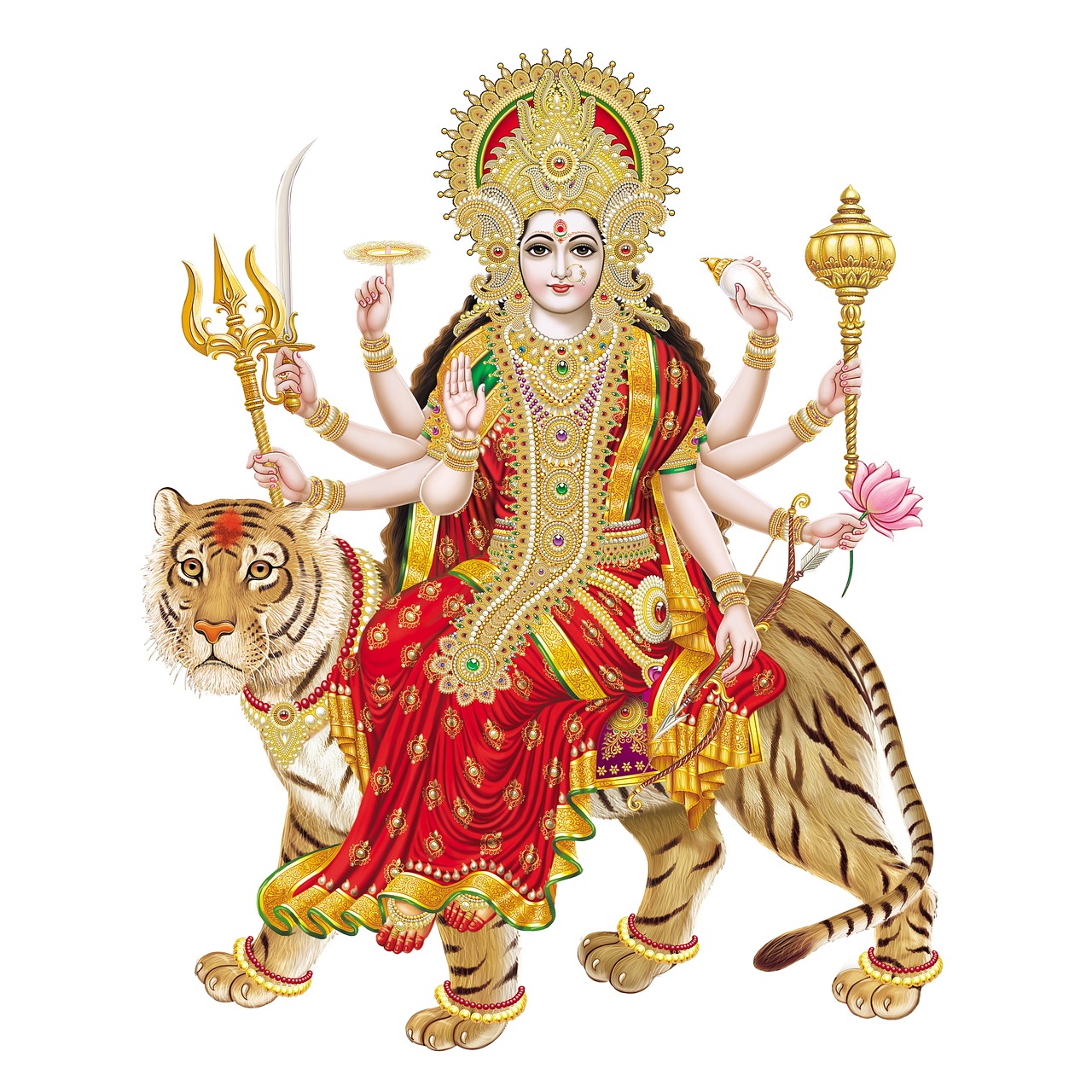Fuxi (伏羲) and Nuwa (女娲) are two pivotal figures in Chinese mythology, revered as the creators of humanity. Fuxi is credited with several key innovations that greatly improved human life, while Nuwa is seen as the protector who saved humanity from catastrophic disasters. As such, they are regarded as culture heroes within Chinese tradition and honored as part of the legendary Three Sovereigns.
The Genesis of the Cosmos
Traditionally, Chinese lore holds that Pangu (盘古) was the first being and world’s creator, emerging from chaos within a cosmic egg. In one telling, Pangu actively formed the universe, using his grasp of Yin and Yang to connect the earth and sky, create mountains, valleys, and separate seas. Conversely, another account suggests that the world’s formation resulted from Pangu’s demise, where his body parts transformed into various natural elements — his eyes becoming the sun and moon, his blood flowing as rivers, and his hair sprouting into trees.
Different narratives exist on the birth of humanity concerning Fuxi and Nuwa. Some say they were the first humans to emerge alongside Pangu’s creation, while others suggest they arose as the sole survivors of a devastating flood. Another origin tale describes them as offspring of the relatively lesser-known goddess Huaxu (华胥), who became pregnant from the thunder god’s footprint, showcasing the diverse mythical accounts around these deities.
Fuxi and Nuwa – Humanity’s Forebears
Fuxi and Nuwa are generally depicted together, often portrayed as siblings. This relationship brings complexity to their roles as humanity’s first beings or as survivors of the flood. Both narratives position them atop the mythical Kunlun Mountains, where they sought divine guidance regarding their union to repopulate the earth. In one version, they resorted to divination; each ascended separate mountains, lighting fires to observe the smoke’s behavior as a sign of heavenly approval for their marriage. When the smoke intertwined, it signaled divine consent, leading them to wed.
In another myth, their child is described as being scattered throughout the world, leading to the creation of humankind.
Nuwa’s Creation of Humanity
Among the myths, the tale of Nuwa crafting humans from clay is particularly popular. According to this narrative, feeling isolated, Nuwa fashioned creatures from mud to alleviate her loneliness. Over six days, she created various animals, culminating with humans on the seventh day, hence celebrating ‘Human Day’ during the Chinese New Year.
Nuwa’s creation is also interpreted as reinforcing societal hierarchies. In one variation, as her hands grew tired from sculpting humans, she swung a rope dipped in clay, resulting in nobility forming from her crafted figures, while the simpler blobs materialized as common folk.
Fuxi’s Innovations for Humanity
While Nuwa focused on creation, Fuxi introduced significant advancements that enhanced human existence. Observing that humans depended solely on hunting for sustenance, Fuxi devised fishing methods to ensure a reliable food source. Upon witnessing his children struggle to find food, he caught fish and taught them how to fish effectively.
The Dragon King, concerned about Fuxi’s new influence, ordered Fuxi to cease, leading Fuxi to innovate once more. Inspired by nature as he watched a spider weave its web, he fashioned a net from reeds and successfully caught numerous fish, which he shared with his people.
Moreover, Fuxi also guided humans in domesticating animals to ensure a steady meat supply and introduced various societal aspects, including currency and writing systems, essential for civilization.
Nuwa’s Heroic Sacrifice
Nuwa’s contributions extended beyond creation — she ultimately sacrificed for humanity’s survival during a calamitous period. Following a fierce battle between the water god Gonggong (龚工) and the fire god Zhurong (祝融), Gonggong’s defeat led to catastrophic consequences. In his rage, he smashed Buzhou Mountain, one of the structures supporting the heavens, causing chaos on earth and leading to mass destruction.
Heartbroken by the plight of her creations, Nuwa mobilized to mend the heavens. She melted five colored stones to patch the sky and sought the aid of Ao, the sky turtle, sacrificing its legs to restore the equilibrium. After slaying a dragon to deter other menacing beasts, she used reeds’ ashes to quell rising floods. In one narrative, these actions drained her of life; in another, she gave her essence to fill the remaining gap of the sky.
Nuwa’s endeavors preserved the world, allowing humanity to thrive in serenity. The myth also elucidates the nature of rivers in China, explaining their west-to-east flow as a consequence of the disrupted balance between earth and heaven.
Legacy of Fuxi and Nuwa
While Nuwa’s life came to an end after her monumental efforts, Fuxi is said to have lived for nearly 200 years, with his final resting place in Huaiyang county, Henan, famed for reflecting the Eight Trigrams—an invention attributed to him. Artistic depictions often showcase Fuxi and Nuwa symbolically intertwined, embodying their unity, and they are frequently portrayed wielding a compass and ruler, tools signifying their roles as societal architects.
Fuxi and Nuwa remain figures of deep reverence within Chinese culture, regarded not just by the Chinese but also by ethnic groups such as the Miao, who claim descent from them. Their worship persists today, reflected in temples dedicated to them and portrayals in popular culture, signaling the enduring significance of these mythic figures.
Top Image: Fuxi and Nuwa embody the genesis of humanity within Chinese folklore. Source: Stout256 / Public Domain.
By Wu Mingren



